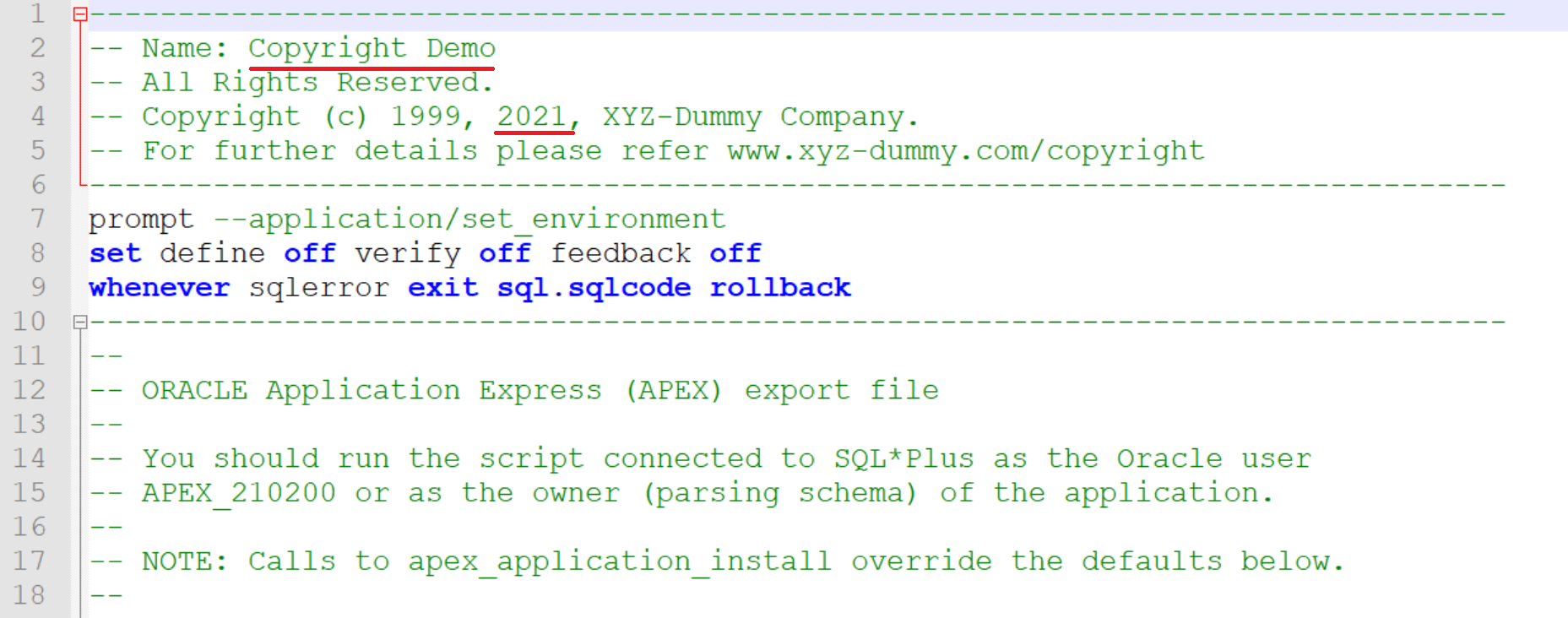Oracle APEX 21.2 has introduced a new feature using which we can include copyright information in the application exports. There is a new application property Copyright Banner. We can enter copyright text here. We can use substitution strings #APP_NAME# and #YEAR# in the copyright text. When writing copyright text into the export files, APEX will replace these substitution strings with respective values. #APP_NAME# will be replaced with the current application name and #YEAR# will be replaced with the current calendar year in YYYY format.
So, let's enter some dummy text into Copyright Banner for testing.
Name: #APP_NAME# All Rights Reserved. Copyright (c) 1999, #YEAR#, XYZ-Dummy Company. For further details please refer www.xyz-dummy.com/copyright
Now, if we export the application, then we can see the below copyright information at the top of the application export file as below. Observe, substitution strings are replaced with their values in the generated copyright text.
If we export the application as a zip file, then there will be a text file with the name copyright.txt under the exported zip file. This file will contain copyright information.
Copyright information will also be included in Component Exports. However, when exporting components as a zip file, then copyright.txt will be included in the zip file only when Include installation files flag is enabled.
What do you think about this little feature added to APEX?
Thank you.



Comments
Since all codes are there in DB server. Only Developer should able to access.
Client IT also have access to DB but they should not touch Apex modification.
Please suggest any mechanism
In such cases, you can install "Oracle APEX Runtime Environment". With this users can run their applications, but they will not be able to see or modify APEX code. Check below link for more details.
https://docs.oracle.com/en/database/oracle/application-express/22.1/htmig/about-apex-runtime-environment.html
Regards,
Hari